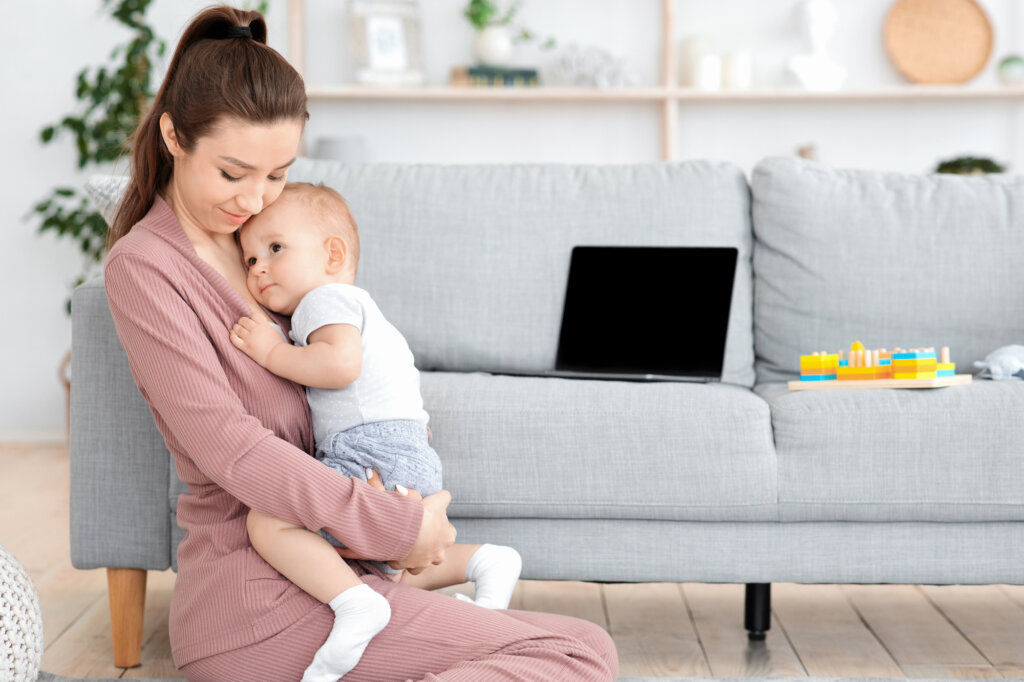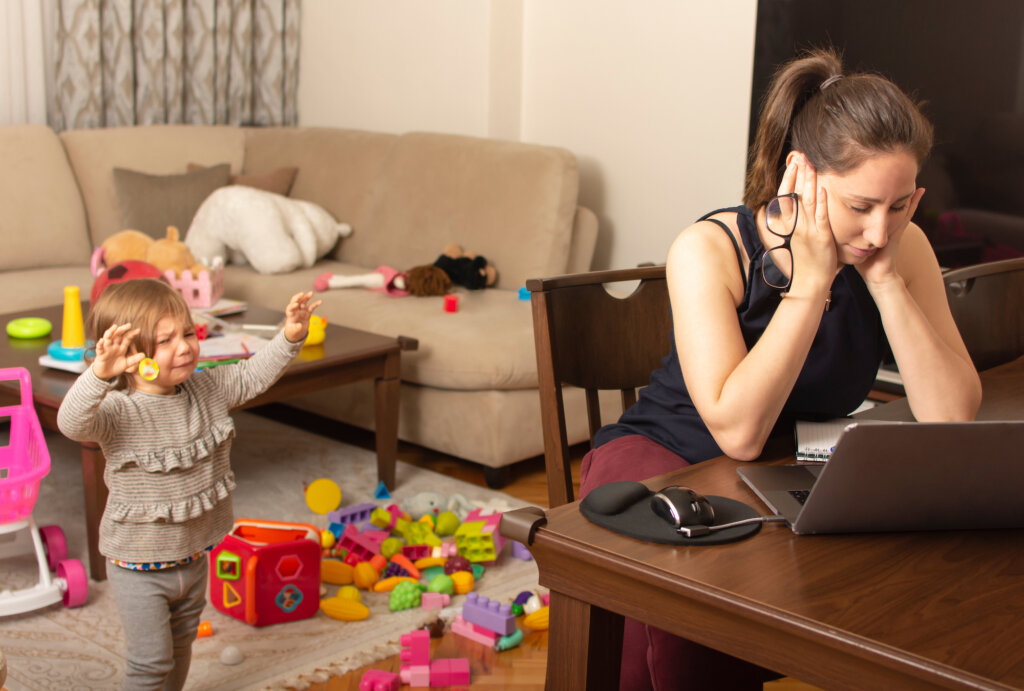Disorganized Attachment


Written and verified by the psychologist Gorka Jiménez Pajares
Disorganized attachment is a form of interpersonal bonding. It’s attracted the attention of many researchers. In fact, it has many consequences during adulthood. They tend to be permeated with aversive emotions, such as anxiety. For example, people with a disorganized attachment style tend to communicate and relate poorly. Consequently, they experience higher levels of discomfort.
Moreover, disorganized attachment is associated with a not inconsiderable number of clinical disorders. For instance, depression, post-traumatic stress disorder (PTSD), psychosis, and personality disorders. But, what’s so special about this attachment style? We’re going to explain. First, we’ll reflect on the concept itself.
“Attachment is a fundamental biological and psychological need, and its absence can have serious consequences for emotional and social development.”
-Mary Ainsworth-
Attachment
Attachment is many things. Firstly, it’s a process, in the sense that you learn to relate to yourself and those around you from early childhood. Secondly, it’s a destination and arrival point because, by connecting and becoming intimate with other people, you pursue the goal of security.
It was John Bowlby who initially defined the concept of attachment. That said, his theory remains relevant today and constitutes a corpus of theoretical and practical concepts. Moreover, it continues to be highly nourished by current research.
Van der Kolk (2020) claims that “when we come into this world, we cry to announce our presence”. This period of the infant’s life is where the attachment bond begins to form. If caregivers respond with warmth, security, protection, and affection to the child’s distress, the child will likely develop a secure, healthy, and positive attachment style that’ll continue into adulthood.
On the other hand, if caregivers behave negligently and fail to care for, soothe, and attend to their infant’s needs, the child may develop insecure ways of bonding with others. One of these is disorganized attachment.
“Attachment is an emotional relationship between two people, characterized by the search for proximity and comfort in situations of stress or danger.”
-Alan Sroufe-

The characteristics of disorganized attachment
In the original investigations of Ainsworth (Main et al, 1990) it was observed that certain infants, in the absence of their caregiver, reacted with hostility, disorientation, confusion, freezing, and fear. This is how the disorganized style of attachment was born. As Granqvist et al (2017) point out, it’s characterized by a “perpetual state of alarm”.
If the infant learns that, when they need security, they’re scorned or that, when they’re afraid, their caregivers react with indifference, they’re likely to withdraw and avoid contact with others. In other words, they develop beliefs that gravitate around two issues: “I am bad and the world is bad” and “I must distrust the people around me and my abilities”.
“Disorganized attachment is the most extreme form of insecurity, characterized by the lack of an organized strategy to deal with stressful situations.”
-Mary Main-
The effects of disorganized attachment
This kind of attachment is the fruit that children reap from their relationship with their caregivers. In effect, what they learn as children, they maintain and perpetuate into adulthood. This attachment can manifest itself, in childhood, in two ways (Van der Kolk, 2020):
- As a consequence of the treatment of some mothers and/or fathers. This is especially the case when, due to worry over their problems, they neglect their children. They might also have the inclination to be extremely intrusive and irritable when it comes to dealing with them. In fact, their behavior is often ambivalent, oscillating between meeting their own emotional needs and those of their children.
- Having parents who feel afraid and know they’re helpless in the face of the ups and downs of life. For this reason, they tend to be incapable of behaving according to the role of the caregiver. They might not even consider picking up their children when they cry.

The effects of disorganized attachment in adulthood
Negligence in care can occur due to both an excess and a deficit of care. Aristotle claimed that virtue is the middle point between two extremes. He was right. Indeed, thanks to a disorganized upbringing, children, when they become adults, present characteristics such as those listed below (Granqvist et al., 2017, Van der Kolk 2020):
- Hostile emotions. They revolve around anger and irritability.
- Instability in the perception of an integrated coherent “I”. For example, in borderline personality disorder (BPD).
- Impulsiveness. It often manifests itself through self-injury. Also, through excessive consumption of toxins or risky sexual activities.
- Risk behaviors that lead to physical and/or psychological harm. For instance, self-injurious behaviors or excessively critical internal dialogues.
It seems the factor that most clearly predicts these reported consequences is emotional withdrawal (Van der Kolk, 2020). Children learn that when they feel terror or anguish, their caregivers don’t help them. Therefore, to ‘save’ themselves, they prefer to take refuge in themselves and stop asking for help.
As you can see, there are many consequences derived from this style of attachment. Inconsistent behavior, difficulty regulating emotions, and emotional distance from other people are additional characteristics. For this reason, we must take note of the extraordinary importance of “caring with love, affection, and sensitivity” for our children.
“Disorganized attachment is associated with a higher frequency of dissociative behaviors and psychological trauma in adulthood.”
-Bessel Van der Kolk-
All cited sources were thoroughly reviewed by our team to ensure their quality, reliability, currency, and validity. The bibliography of this article was considered reliable and of academic or scientific accuracy.
-
Hadiprodjo, N. A. (2023). Attachment Theory in Paediatric Health Care. In Integrating Therapeutic Play Into Nursing and Allied Health Practice: A Developmentally Sensitive Approach to Communicating with Children (pp. 59-73). Cham: Springer International Publishing.
-
Van der Kolk, B. A., & Van der Kolk, B. A. (2020). El Cuerpo Lleva la Cuenta: Cerebro, Mente Y Cuerpo en la Superación Del Trauma. Alianza Editorial.
-
Wray, L. L. (2017). Developmental risk in young children: The contributions of mothers’ empathy, attachment, trauma, and caregiving dysregulation (Doctoral dissertation, Mills College).
-
Brown, D. (2002). (Mis) representations of the long-term effects of childhood sexual abuse in the courts. Journal of Child Sexual Abuse, 9(3-4), 79-107.
- Main, Mary, and Judith Solomon. «Procedures for identifying infants as disorganized/disoriented during the Ainsworth Strange Situation». Attachment in the preschool years: Theory, research, and intervention 1 (1990): 121-160.
This text is provided for informational purposes only and does not replace consultation with a professional. If in doubt, consult your specialist.








